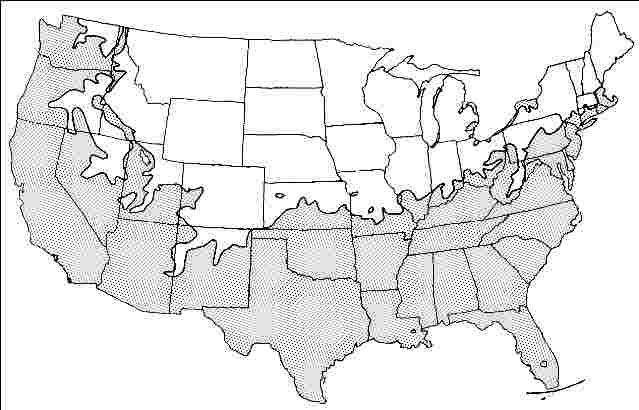Introduction
Torulosa Juniper grows into a narrow cone shape when young, then opens up as the plant ages. Although the main body of its foliage is as thick as if it had been sheared, delicately twisted, upright branches emerge gracefully all around the plant, in almost a flame-like manner. It may grow to 15 feet tall in 15 years, perhaps leaning to one side in a picturesque manner. Do not expect a row of them to provide a uniform shape since crown form varies.

Credit: Ed Gilman, UF/IFAS
General Information
Scientific name: Juniperus chinensis
Pronunciation: joo-NIP-er-us chih-NEN-sis
Common name(s): 'Torulosa' Juniper
Family: Cupressaceae
USDA hardiness zones: 5B through 11 (Fig. 2)
Origin: not native to North America
Invasive potential: little invasive potential
Uses: specimen; screen; container or planter; espalier; highway median
Availability: not native to North America

Description
Height: 10 to 15 feet
Spread: 6 to 10 feet
Crown uniformity: irregular
Crown shape: pyramidal, upright/erect
Crown density: open
Growth rate: moderate
Texture: fine
Foliage
Leaf arrangement: opposite/subopposite
Leaf type: simple
Leaf margin: entire
Leaf shape: scale-like
Leaf venation: none, or difficult to see
Leaf type and persistence: evergreen, fragrant
Leaf blade length: less than 2 inches
Leaf color: green
Fall color: no color change
Fall characteristic: not showy
Flower
Flower color: brown, yellow, green
Flower characteristics: not showy
Fruit
Fruit shape: cone, oval, round
Fruit length: less than .5 inch
Fruit covering: dry or hard
Fruit color: blue
Fruit characteristics: does not attract wildlife; not showy; fruit/leaves not a litter problem
Trunk and Branches
Trunk/bark/branches: branches don't droop; not showy; typically multi-trunked; thorns
Pruning requirement: little required
Breakage: resistant
Current year twig color: green
Current year twig thickness: thin
Wood specific gravity: unknown
Culture
Light requirement: full sun, partial sun, or partial shade
Soil tolerances: sand; loam; clay; alkaline; acidic; well-drained
Drought tolerance: high
Aerosol salt tolerance: high
Other
Roots: not a problem
Winter interest: no
Outstanding tree: no
Ozone sensitivity: unknown
Verticillium wilt susceptibility: resistant
Pest resistance: resistant to pests/diseases
Use and Management
Torulosa juniper develops into a showcase specimen without pruning and is probably best used for this purpose. Planted on 4- to 6-foot centers, it can develop into a thick screen which could be useful along a driveway, where a narrow, bright green screen is often needed to create privacy.
Growing best in full sun, more open in partial shade, torulosa juniper needs well-drained soil or it will decline from root rot. It tolerates alkaline soil and is quite drought-tolerant but root regeneration is slow after transplanting from a field nursery. It is frequently offered in containers from a nursery.
Torulosa juniper can be propagated by cuttings.
Pests
Mites and bagworms can infest the foliage.
Diseases
Torulosa juniper is susceptible to root rot and bacterial blight.